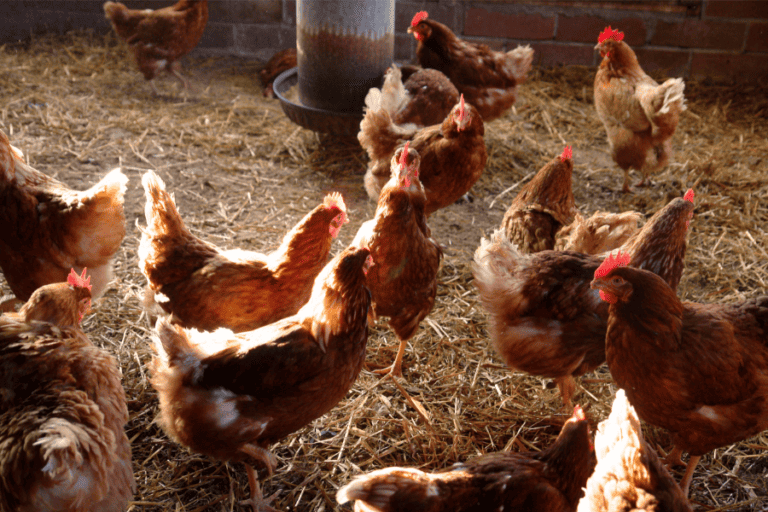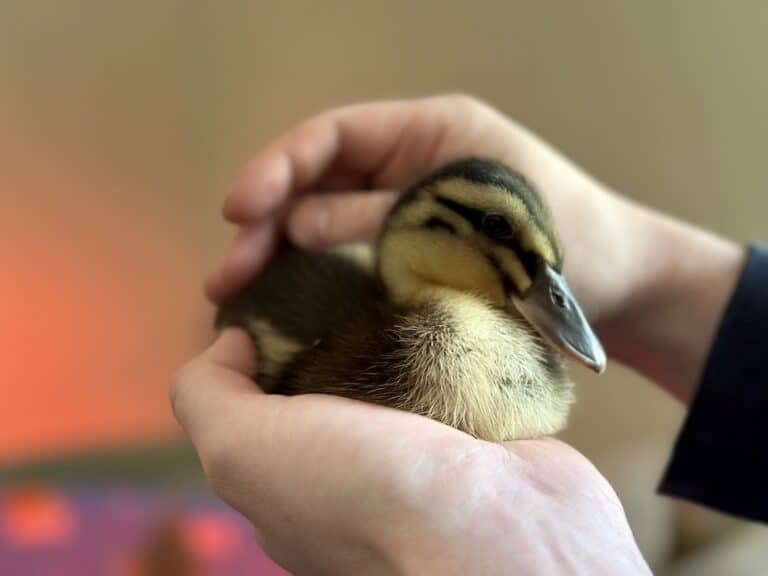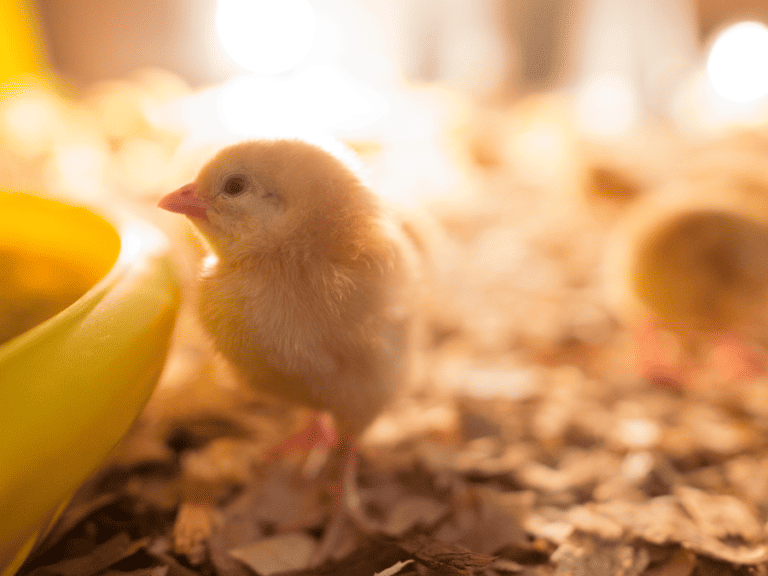Can Chickens Lay Eggs Without A Rooster?

If you’re new to raising chickens, you might wonder whether a rooster is necessary for egg production. The answer might surprise you! While roosters play a role in fertilizing eggs, they aren’t required for hens to lay them. Hens are the true egg-laying champions here. Hens can lay around 200-300 eggs per year, depending on the breed, and do not need a rooster.
In this article, we’ll explore the biology behind egg production, types of laying hen breeds, and help you decide if adding a rooster to your flock is right for you. Whether you’re keeping chickens for fresh eggs or as a hobby, understanding this process can help you better understand your hens!
How Do Chickens Lay Eggs

Imagine you have a group of hens happily clucking away in your backyard. Now, these hens will lay eggs all on their own without the need for a rooster to fertilize them. In fact, hens are pretty self-sufficient when it comes to egg production.
Each year, a single hen can lay approximately 200-300 eggs, depending on her breed. It’s like having your own mini egg factory right in your backyard! So, there is no need for a rooster to get those fresh eggs you crave.
But, you might be wondering, what’s the deal with roosters then? Well, they do have some roles to play in the chicken world, and we’ll explore those later.
Now, let’s focus on our lovely hens. When a hen reaches maturity, usually around 5-6 months old, her ovaries start working. Inside those ovaries, the yolk forms, and it’s the first step in creating an egg.
The Yolk
The yolk is also called an ovum (plural ova) and is the first to form in a hen’s ovary. When the yolk matures, it then travels from the ovary to the oviduct. This process can take anywhere between 15 to 30 minutes.
The whole egg-making process is quite fascinating and usually takes around 24 to 27 hours. That’s right, it takes almost a full day for a hen to produce one egg. So, they really put in some hard work to provide us with those delicious eggs.
Fun Fact: you might have noticed that egg yolks come in different colours. The colour of the yolk actually depends on the hen’s diet. Hens that eat more yellow and orange pigments produce yolks with a deeper colour. So, don’t be surprised if your yolks vary in hue.
The Egg White
In this stage, if your hen has mated with a rooster, the egg would become fertilized. Regardless of whether the egg is fertilized or not, the egg white process is the same for both. The yolk travels down the magnum, which is where the albumen (also known as the egg white) begins to form. From there, the egg goes to the isthmus. This is where the shell membrane will begin to form around the egg. It takes around two to three hours to complete this stage.
The Shell
The shell stage takes place in the uterus (known as the shell gland), and it takes around 20 hours for the egg to fully form around the egg. The eggshell’s colour will develop within the last few hours.
the Rooster
Now, let’s address the big question: What’s the role of a rooster in all of this? Well, roosters play a part in fertilizing eggs. Without a rooster, the eggs your hens lay will be infertile.
Here’s how it works: When a rooster mates with a hen, the sperm is transferred to the hen’s oviduct. This fertilizes the egg before the shell is formed. The fertilized egg can then develop into a chick if it’s incubated under the right conditions.
So, if you’re interested in hatching your own chicks, a rooster is essential. But if you’re solely interested in fresh, delicious eggs, you can skip the rooster without any worries
Related Homestead Fox Article: Are All Eggs Fertilized If You Have A Rooster?
Pros Of Having A Rooster
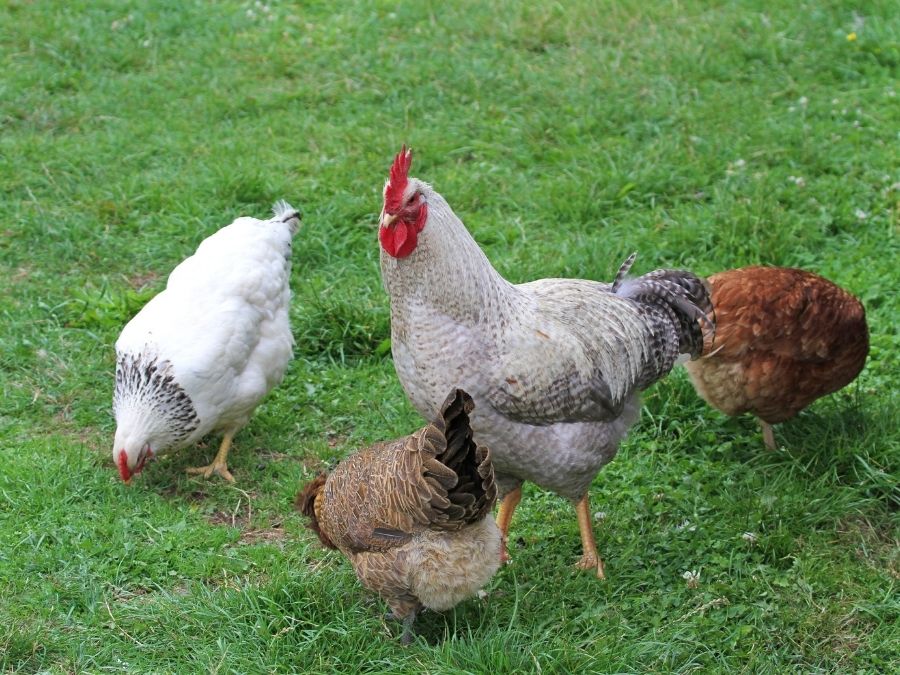
Having a rooster can have some advantages for your flock and home. However, it is important to make sure it is a good fit for you as they also have some drawbacks.
1. Roosters Fertilize Eggs
One of the main reasons people get roosters is to fertilize eggs and hatch chicks. Without a rooster, your hen’s eggs will be infertile. Once a rooster has mated with a hen, the sperm will be stored within its reproductive tract for up to two weeks.
2. Keeps Order In The Flock
Naturally, roosters tend to lead the flock by breaking up fights and finding food. Without a rooster, one of your hens will likely take on the role of the head chicken. Pecking order is normal within chicken flocks and can sometimes lead to bloodshed. A rooster will help to keep the peace and create a more controlled order within the group.
3. Protect The Flock
A rooster is a great asset to your hen’s safety and protection. Since roosters take on the head position in the flock, they will act as protectors. Roosters will alert others of nearby dangers, guard them, and, in some cases, fight against predators.
Cons Of Having A Rooster
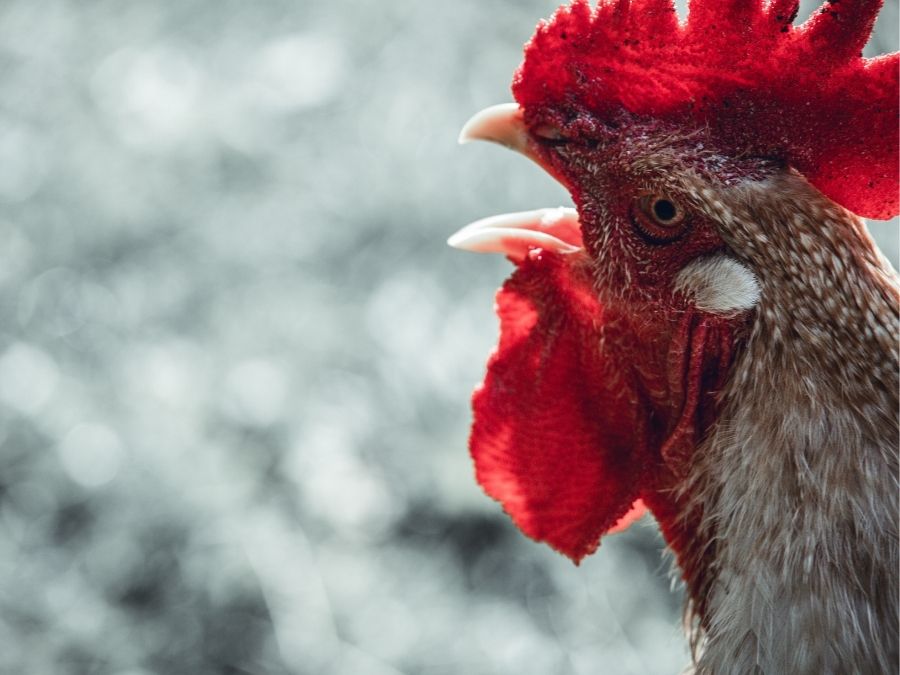
Now that you know why you should get a rooster, here are a few disadvantages to consider first.
1. Roosters Are Loud
Roosters are known for their distinctive crowing, which can be quite loud and happen at any time of the day. If you live close to neighbours, their early morning serenades might not be appreciated. Some roosters (like ours) will crow all hours of the day, not just in the mornings. You never know when you will get an overly vocal rooster.
2. Roosters Can Act Aggressively
Roosters can act aggressively, even toward their owners. This can happen for a few reasons. It could be due to them trying to protect the flock, or maybe they are reaching puberty, which causes a rush of hormones and increased testosterone. This typically happens anytime after they are four months old.
3. local regulations
Before getting a rooster, be sure to check local regulations. Some areas, especially urban ones, have zoning laws that prohibit roosters due to their noise. You wouldn’t want to run afoul of the law!
4. They Fertilize Eggs
While having fertilized eggs is a benefit of having a rooster, it can also be a con. The issue is that you will not know which eggs are fertilized until you crack one open and see if it has a tiny white spot or “bullseye” on the yolk. This can be unsettling as not everyone is comfortable eating fertilized eggs, though it is safe to do so.
Types Of Laying Chicken Breeds
While all hens lay eggs, some lay more than others. There are three categories of chickens: layers (egg hens), broilers (meat hens) or dual-purpose (egg and meat hens). Layers will typically produce the most eggs per year and do not have as much meat on them compared to broilers, which are usually raised for meat and lay fewer eggs per year. Lastly, some chickens are dual-purpose and are used for both eggs and meat. They do not produce as many eggs as a laying hen or grow as fast as a broiler, but they do lay more eggs on average than a broiler and grow faster than a layer.
The breed of your hens can determine how many eggs they will produce per year. A few external factors, such as the quality and quantity of food consumption, amount of daylight received, diseases and stress, can alter your chickens’ egg-laying.
With that, here is our list of the top five best-laying hens for your backyard!
Leghorn
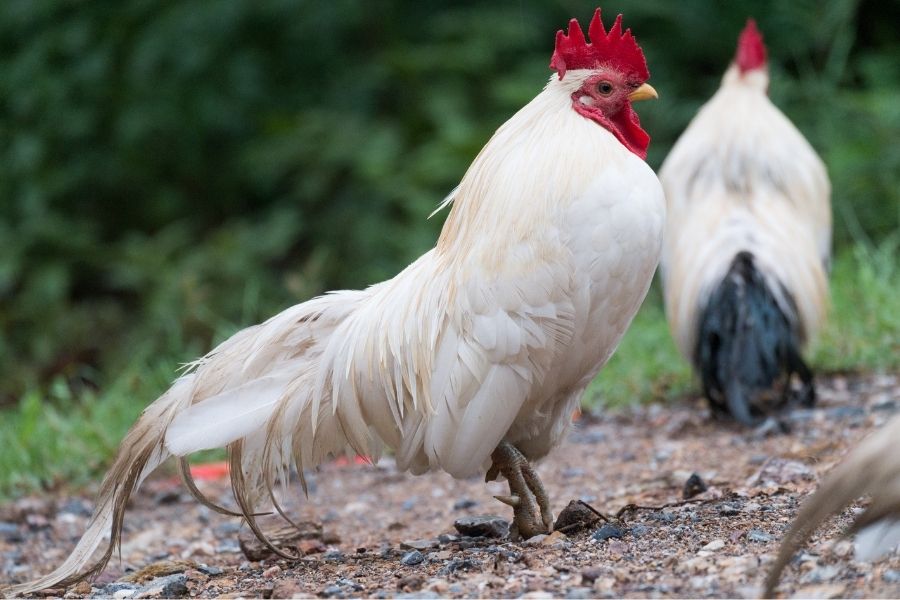
Leghorns are one of the most popular breeds for commercial chickens, as they can lay anywhere between large to extra large 280-320 white eggs per year. They are great laying hens, though it should be noted that they are shy and independent. While they can be friendly, they are not always.
Rhode Island Red
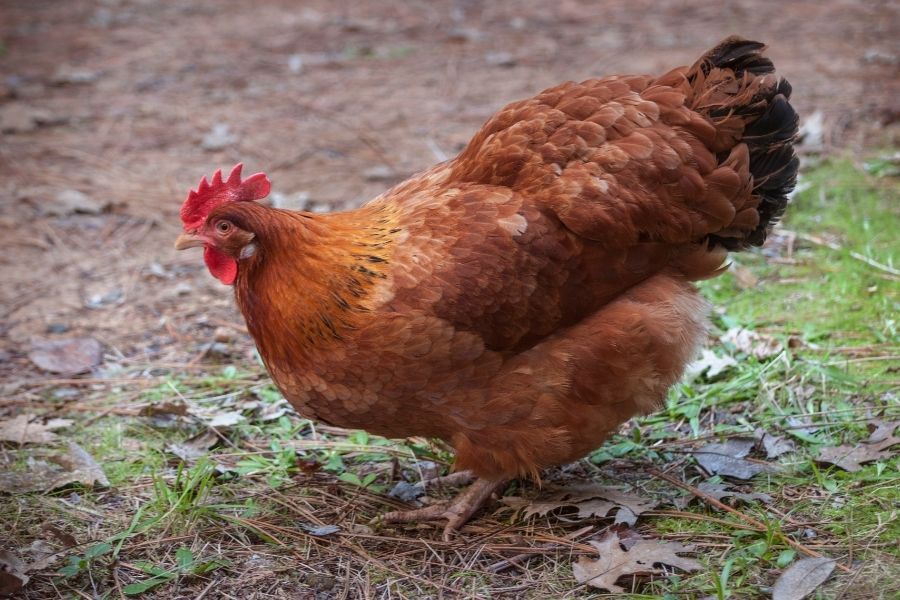
Rhode Island Red hens are a popular backyard homestead choice as they are happy-go-lucky hens that produce large yields. They lay between 200-300 large brown eggs per year and will continue to lay eggs throughout the winter. Rhode Island Reds are friendly and low maintenance, making them a great option for beginners. This is a popular breed for both eggs and meat.
Australorps
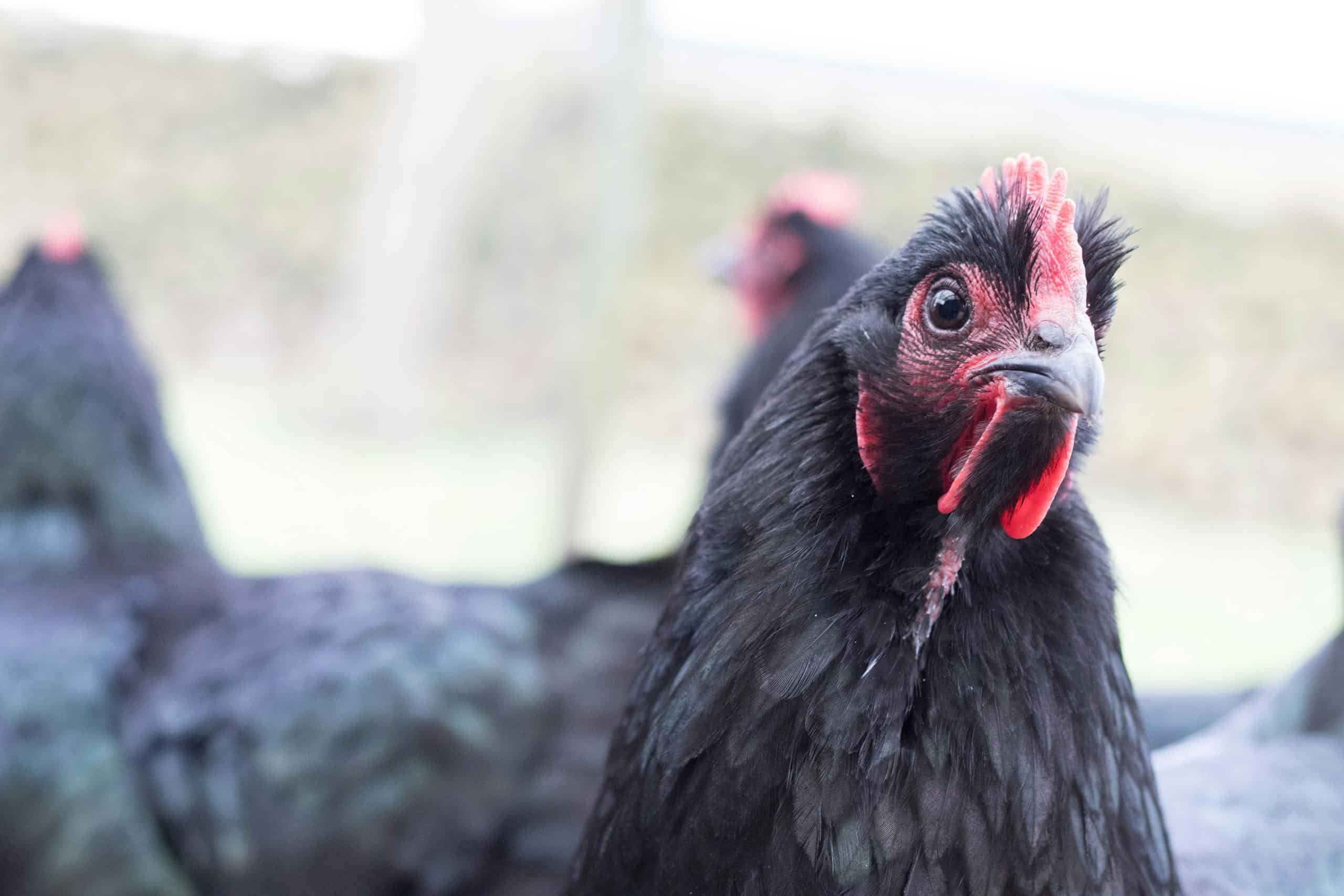
Australorps are extremely friendly, so if you are looking for a cuddly, high-volume egg-laying hen, these are for you! Not only do they make for incredible egg and meat hens, but also pets. They can adapt to being handled quite quickly and are suitable for families with children. Australorps can lay between 250 to 300 large light brown eggs per year and are hardy.
Plymouth Rock
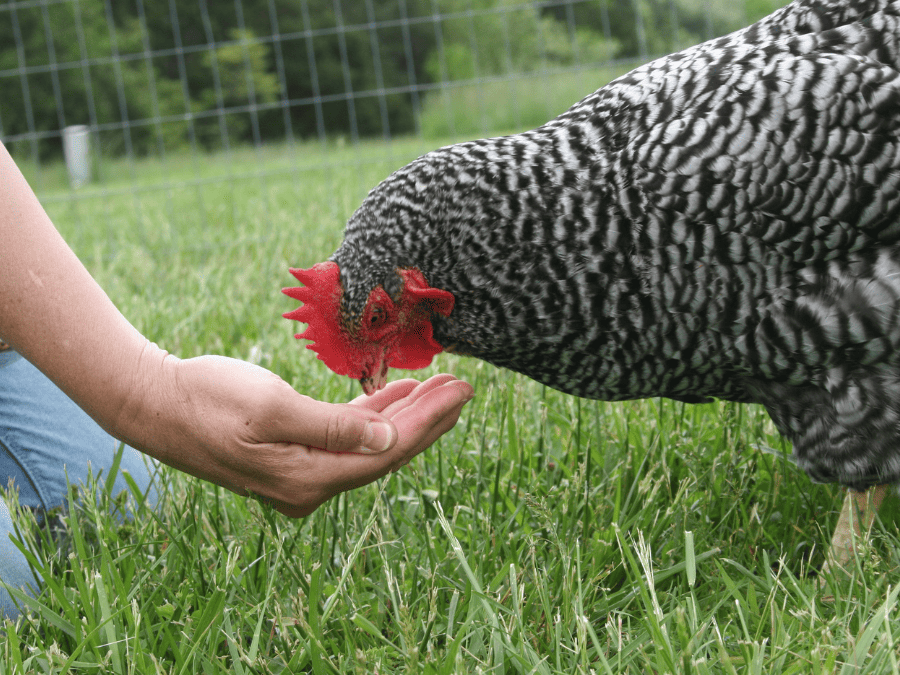
Plymouth Rock chickens are an excellent option for eggs and meat as they are a dual-purpose breed. They are quite docile and friendly, making them the perfect addition to a backyard homestead. You can expect between 200-240 medium-sized light brown eggs per year. Plymouth Rock’s have become a popular choice for most people because they will continue to lay eggs throughout the winter as their dense feathers allow them to tolerate colder weather.
Sussex

Sussex hens are excellent for families with children. They are friendly and docile. In fact, they enjoy affection such as being pet, held and spoken to often. Sussex hens lay approximately 250 large white and brown eggs per year and are suitable for colder climates.

